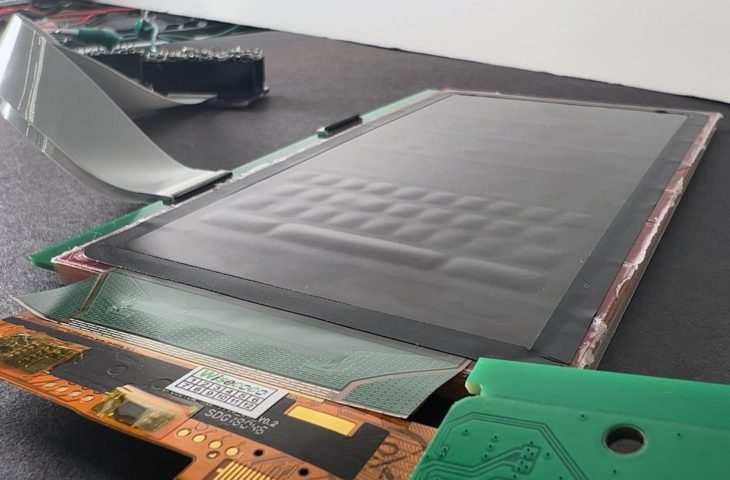This OLED screen has “liquid” buttons
- April 27, 2023
- 0
American researchers show a screen on which a liquid can flow, causing tactile “buttons” to protrude from the display. This should make the typing experience feel more natural
American researchers show a screen on which a liquid can flow, causing tactile “buttons” to protrude from the display. This should make the typing experience feel more natural


American researchers show a screen on which a liquid can flow, causing tactile “buttons” to protrude from the display. This should make the typing experience feel more natural on a touchscreen.
As good as a touchscreen is, many people still prefer the classic typing feel of a keyboard. The feedback a keyboard gives is difficult to replicate on a screen without physical buttons. Apple’s Taptic Engine is perhaps the closest thing: using vibrations, the screen tries to let you “feel” the buttons. Although it’s not quite the same.
The Future Interface Group, associated with Carnegie Mellon University in Pittsburgh, USA, has found an original solution for this. Researchers Craig Shultz and Chris Harrison proudly show off a concept OLED screen that has the ability to burst buttons.
The trick is running a liquid under the display, which pushes the buttons up in less than a second. The “liquid” keys protrude up to five millimeters from the screen and are robust enough to mimic the experience of a physical keyboard.
The concept itself is not entirely new, and researchers have attempted to develop similar technologies in the past with varying degrees of success. The researchers’ breakthrough is that the entire mechanism, consisting of embedded electroosmotic pumps and a liquid reservoir, is only a few millimeters thick. It is theoretically possible to build the technology into thin smartphone screens.
However, there is still a long way to go before we see smartphones with “liquid” buttons on store shelves. Finally, the shape and size of the buttons must match the pixel size of the screen. In this paper, the researchers explain their results. The YouTube video below shows how the technology would work in practice on an iPhone screen.
Source: IT Daily
As an experienced journalist and author, Mary has been reporting on the latest news and trends for over 5 years. With a passion for uncovering the stories behind the headlines, Mary has earned a reputation as a trusted voice in the world of journalism. Her writing style is insightful, engaging and thought-provoking, as she takes a deep dive into the most pressing issues of our time.